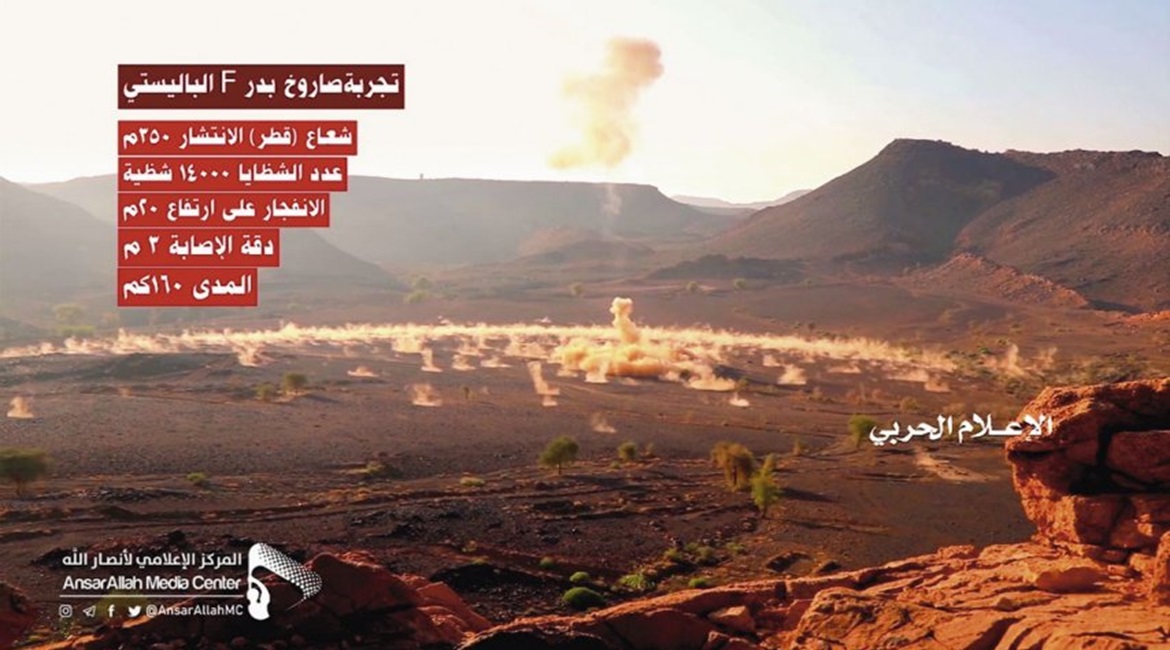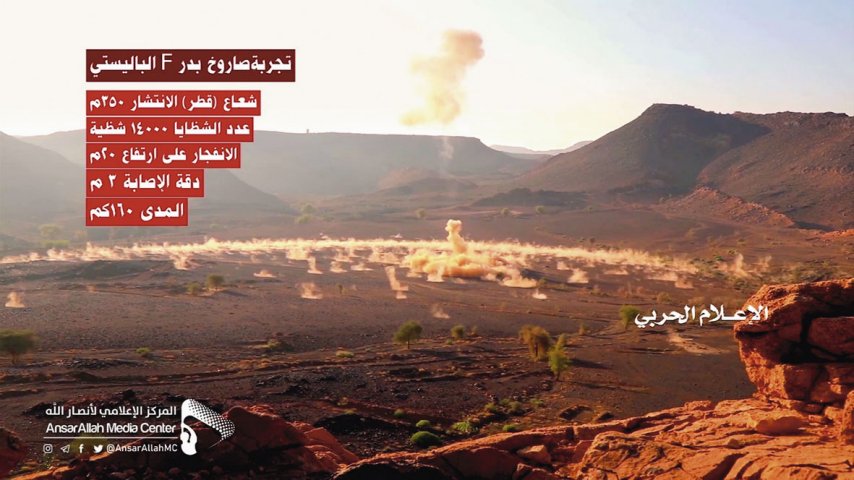
Ansar Allah, the Yemeni rebel group popularly known as the Houthis, unveiled a new version of its Badr series of surface-to-surface projectiles that has an airburst warhead on 16 April.

A still from the briefing video shows the fragmentation created by the detonation of a Badr-F missile during a test. (Ansar Allah)
“Our missile power, which you once claimed you were able to destroy, is now much stronger than it was years ago,” Ansar Allah military spokesman Yahya Sari told the Saudi-led coalition, which launched its military intervention in March 2015 in part to prevent the group from taking control of Yemen’s ballistic missiles.
Yahya Sari was speaking in a video briefing on the Badr-F, which he said has the same specifications as the Russian Tochka: a type that was used effectively against coalition positions in the first year of its intervention in Yemen.
The original Badr-1 is an unguided heavy artillery rocket; the Badr-1P is a guided version that was unveiled in October 2018. While Ansar Allah did not release any imagery of the Badr-F, it said the new weapon has a warhead that detonates before hitting the ground, thereby spreading fragmentation over a larger area.
The group said the missile has a range of 160 km and detonates 20 m above the ground, spraying 1,400 fragments across a 350 m diameter area.
During his briefing, Yahya Sari showed aerial surveillance footage of Badr-Fs being used to carry out four attacks against coalition or allied Yemeni forces on unspecified dates. All the strikes appear to have been accurate.
In one case, Yahya Sari said the aerial surveillance footage showed ambulances rushing to pick up casualties and then – on an unspecified later date – the camp being abandoned.
Looking to read the full article?
Gain unlimited access to Janes news and more...




